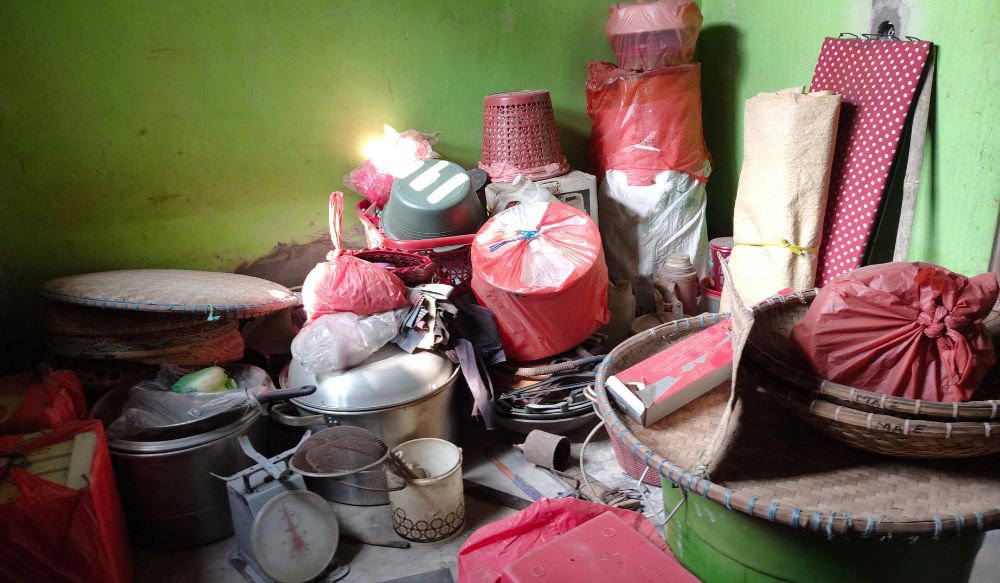
Managing hoarding behaviours: A compassionate guide
- Categories Key things to help you everyday, Uncategorized
- Date November 14, 2024
We were recently contacted about hoarding. The truth is, this isn’t an easy one as there is not a linear way to navigate a situation with a resident who is a hoarder.
Hoarding is a complex process that requires us to be our most professional, where we need to demonstrate empathy, sensitivity, and practical support.
The behaviour of hoarding, distinct from simple clutter or a messy home, is a disorder that involves persistent difficulty in discarding possessions.
Over time, it’s a behaviour that can create safety, hygiene, and emotional concerns for both the resident and the surrounding community.
As Village Professionals, we play a crucial role in addressing these behaviours, often needing to balance the resident’s autonomy with the wellbeing of the entire village.
By way of a strategy, here are some key things for you to consider:
Trust and understanding.
Do you have a relationship with the resident whereby you can speak to them about their behaviour? For example, instead of saying, “Your room is overcrowded,” try, “I’ve noticed that things seem a bit cluttered, and I wanted to check in to see if there’s any way I can help.” Hoarding is often linked to deeper emotional or psychological issues. Your empathy can help create a foundation of trust, which is essential for any positive progress.
Family and Support Networks.
If possible, engage the resident’s family or their wider support network. There is a chance they share your concerns it can assist with providing the resident with reassurance and support. Be sure to approach these conversations with sensitivity, respecting the resident’s privacy and autonomy.
Professional Support.
Consider connecting with professionals who specialise in hoarding behaviours. In most local areas there are organisations focused on mental health can provide invaluable insights and assistance tailored to the resident’s needs, a number of whom specialise in hoarding. Not-for-profit home care providers might also be able to connect you in with support, and help you with practical strategies that are more likely to result in long-term improvements.
Compliance.
While empathy is key, the safety of the resident and the broader community remains a priority. Work to find a balance between addressing safety concerns and maintaining a supportive relationship with the resident. Quoting village rules and their resident agreement won’t always work, as a hoarder will maintain they are doing nothing wrong. In cases where safety regulations or fire codes are at risk, explore ways to involve third parties who can support what you are looking to accomplish for the resident.
Document everything.
Like any situation involving the welfare of one resident, make sure to document what you can, including the steps taken and any persistent challenges. This includes making file notes of conversations and observations. Not everything needs to be a formal letter, especially given the delicate nature of dealing with a hoarder.
Regular follow-up.
This is critical to any situation involving one or a group of residents. Keep these check-ins supportive rather than evaluative, demonstrating that the village team genuinely cares about their wellbeing. Village Managers may also consider staff training on mental health and hoarding behaviours to better equip their teams.
Managing hoarding requires a compassionate, respectful, and structured approach. By collaborating with the resident, involving family, connecting to resources, and gently reinforcing standards, Village Managers can address the issue while upholding the resident’s dignity and the village’s integrity.
For more information on hoarding behaviour:
There is a lot of great information to help you understand hoarding as a ‘disorder’. The best resource we have come across is via Direct Health, a website that provides free health advice to Australians. You can find their page on hoarding here: https://www.healthdirect.gov.au/hoarding-disorder
Resources:
State based support is available
Community support – a number of Church organisations have a support group
Hoarder – websites
You may also like

More professionals reach great heights at Village Summit

“What a fabulous line up of presenters”

